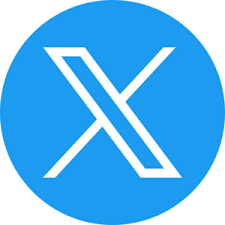In today's digital age, the SAT exam has undergone a significant transformation, moving from a traditional paper-based format to a digital one. This shift alters the test-taking mode and necessitates different strategies and skills for success. In this blog guide, we will delve deeper into the nuances of the digital SAT exam and equip you with the tools and knowledge needed to crack it successfully.
But first, let's understand the Digital SAT:
The digital SAT exam retains the same content and structure as its paper-based counterpart but is administered via a computer-based interface.
This format offers several advantages, including instant scoring, adaptive difficulty levels, and a more interactive testing experience.
However, it also requires test-takers to be proficient in navigating digital tools and managing their time effectively in an electronic environment.
test test
How is the SAT syllabus structured?
The digital SAT exam is structured as a 2-hour and 14-minute extended test scored on a scale of 400-1600. The SAT consists of two sections-
- Mathematics
- Reading and Writing
Both sections contain two modules each. Your performance on the first module of the section will determine the difficulty level of the questions–the greater the difficulty level of the question, the higher the marks it carries, and vice versa.
The Mathematics, Reading, and Writing sections are scored out of 800 individually, making the total SAT exam score 1600.
SAT Maths Syllabus
The SAT Maths section primarily covers questions from high school maths on algebra, geometry, trigonometry, graphs, functions, and equations. This section is majorly focused on four key areas-
| Name | Focuses on |
| Algebra |
|
| Advanced Maths |
|
| Problem Solving and Data Analysis |
|
| Geometry and Trigonometry |
|
SAT Reading and Writing Syllabus
This section has brief and shorter passages with more direct questions. The passages are 100-150 words long, covering several topics related to history, social & life sciences, politics, and other comprehensive issues. The section aims to assess English reading, language, and comprehension skills. The SAT syllabus in this section focuses on-
| Topic | Focuses on |
|---|---|
| Information and Ideas |
|
| Expression of Ideas |
|
| Standard English Conventions |
|
| Craft and Structure |
|
Tips for preparing for the SAT digital exam:
-
Familiarise Yourself with the Digital Interface:
Practice using official College Board practice tests and other reputable online platforms that simulate the digital SAT interface. Get comfortable with features such as highlighting, flagging questions, and utilising the digital calculator effectively.
-
Master Time Management:
Develop a time management strategy that allows you to allocate sufficient time to each section while ensuring completion within the designated time frame.
Practice timed tests regularly to improve your pacing and build endurance for the exam.
-
Utilise Resources Wisely:
Use various resources, including study guides, practice questions, and online tutorials, to reinforce your understanding of key concepts and test-taking strategies.
Leverage adaptive learning platforms like Khan Academy to customise your practice based on your strengths and weaknesses.
-
Enhance Content Knowledge:
Familiarise yourself with the content and question formats across all sections of the digital SAT, including Reading, Writing and Language, Math (with and without a calculator), and the optional Essay. Review fundamental concepts in grammar, algebra, geometry, data analysis, and reading comprehension to build a solid foundation for the exam.
-
Analyse and Adapt:
Regularly assess your performance through practice tests and identify areas of improvement. Adjust your study plan to focus on weak areas and track your progress over time.
-
Read Strategically:
Skim passages in the Reading section to grasp the main idea and structure before delving into the questions. Pay close attention to context clues and tone to aid comprehension and answer inference-based questions.
-
Work Efficiently:
Prioritise more straightforward questions and passages to maximise your score potential within the allotted time. Use the process of elimination to eliminate incorrect answer choices and increase your chances of selecting the correct option.
-
Manage Your Time:
Monitor the time remaining for each section and adjust your pace accordingly to ensure completion. Allocate time for reviewing and revising answers, especially for math calculations and complex reading passages.
-
Stay Calm and Focused:
Maintain a calm and focused mindset throughout the exam, even when faced with challenging questions. Take short breaks during the test to refresh your mind and maintain concentration.
-
Review Thoroughly:
Use any remaining time to review flagged questions and double-check your responses for accuracy. Pay attention to detail and ensure you have answered every question to the best of your ability.
Conclusion:
Cracking the digital SAT exam requires diligent preparation, strategic thinking, and adaptability to the digital format. By following the comprehensive strategies outlined in this guide and dedicating yourself to consistent practice and improvement, you can confidently approach the exam and maximise your chances of achieving your target score. Remember, success on the digital SAT is attainable with the right mindset and preparation. Sign up for the IMS International SAT Live Online program to ensure you score 1400+ without much ado.



